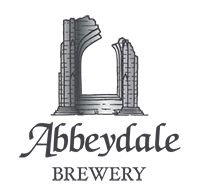
Next up in our series where you get to know Team Abbeydale (our co-owners!) a little better, we’re having a chat with our amazing Ethna! Ethna’s a long standing member of our sales team, our biggest proponent of stouts and porters, and the member of the team who makes the dreamiest cheesecakes. Over to Ethna!
What’s your name and where do you come from?
My name is Mrs Ethna Wild (cos I love being Mrs Wild!), originally from Sligo, Ireland, I lived in London for some years but now I’ve made Sheffield my forever home.
What is your role at Abbeydale Brewery?
I’ve been very fortunate to be part of the sales team for over 12 years – they don’t seem to have found me out yet! So most of my time is spent chatting to our wonderful customers. My role also involves a little office management, cracking the whip, ensuring shared tasks get completed and we know who’s out and who’s in, that sort of thing!
What’s your favourite beer style and why?
Absolutely, completely, every time partial to a stout – the roastier and toastier the better! One of my favourite Abbeydale beers will always be our Dark Chocolate and Raspberry Stout. Created originally within the Signature Beers Series as “Born to be Wild” (yes mine), it really did just so impress me the way the brewers could take ingredients that I’d been playing with in my kitchen at home and create this absolutely cracking stout. There’s a myriad of amazing stouts out there but this one will always be close to my heart.
What’s your favourite thing about working at Abbeydale Brewery?
When I decided I wanted a change from working as a QS in the construction industry, I couldn’t believe I’d actually landed a job at a brewery, a local independent brewery and in sales! This should be a blast sort of thing! What completely blew me away and something that I very much consider to be a vital part of Abbeydale today is the complete and absolute dedication to Quality and Customer Service that is ingrained within this company. That’s what I love about working here.
Best place to enjoy a pint?
This is a hard one – but I’m going to say With Friends – if that’s not too gushy?? Couldn’t possibly narrow the choice down to one single pub, so I’m going to go with a fabulous memory, or a favourite memory of being in a pub! And that was in the Hard Rock Café in Budapest. I was there for a long weekend with hubby, we just had the best weekend – fab apartment, fab weather, fab city and just the best time seeking out the Ruin bars. And that night in the Hard Rock was just the icing on the cake, the cocktails, the company, the music, the ambience, thinking about it now just makes me want to go back there!
Where did you have your first (legal!) pint?
Hmm, don’t really know this one… I wasn’t really bothered about drinking (once upon a time!!) so I came late to the party I think. I’m going to blame the Drama Society at Galway ITC, so my first pint was probably in some random pub in the gorgeous city of Galway, most likely the Hole in the Wall.
Favourite snack to enjoy alongside a beer?
Without doubt has to be big fat chunky chips, with a good shake of big coarse ground salt. When you’re out hiking with hubby and pooch and you happen on a pub that does proper chips it’s just the best thing.
Bacon and Scampi Fries are vile devils food – even pooch won’t eat them!
When you’re not selling beer, what do you like to get up to?
Thankfully, Lizzy, our 15 year old pooch has taken to her pram, so we’re still able to get off exploring when we go away – near enough monthly, in our touring caravan.
I also like to grow things, which I consider different to gardening! Germination, propagation, resurrecting a plant from death row – love all that, once it’s up and growing then someone else can take over!
Also recently took the plunge and started doing some wild swimming, just love the feeling of freedom that comes with it and mastering your fears/apprehension of the cold!!
Along with a weekly class, I endeavour to practice yoga daily, little 20/30mins sessions, I think it’s just so good for you, mentally and physically, and sincerely believe it would benefit so many people if they would just give it a go.
And my other favourite thing is being a member of Shine Choir. Just the best bunch of lassies and amongst all the chatter and laugher we do manage to get some practice/rehearsals in and then get to do fabulous shows all through the year including Tramlines Fringe Festival and just recently supporting Marie Curie at their charity collection in Sheffield Station, the feeling of empowerment doing that surprised us all.
Who’s your hero (beery or otherwise!)?
Another difficult one, but if hero is one who you’d like to emulate, who’s qualities you admire, then I’m going to go with my oh so inspiring niece. When life threw a curve ball in her chosen career, she just played with it, set a new course and earlier this year was awarded Young Entrepreneur of the Year. Strong and independent, super intelligent, loving, caring and funny. And a rugby fan of course! Though so very very proud to be her Auntie, I do also like to think of us as being bessie friends. She’s just cool, calm and collected our Rach!
And finally… If you were a cartoon character, who would it be?
Red from Fraggle Rock, hands down. Just loved her never ending enthusiasm, energy, empathy and positivity. Red’s great – don’t think I’m quite as competitive as her though, but husband might disagree with that!


























